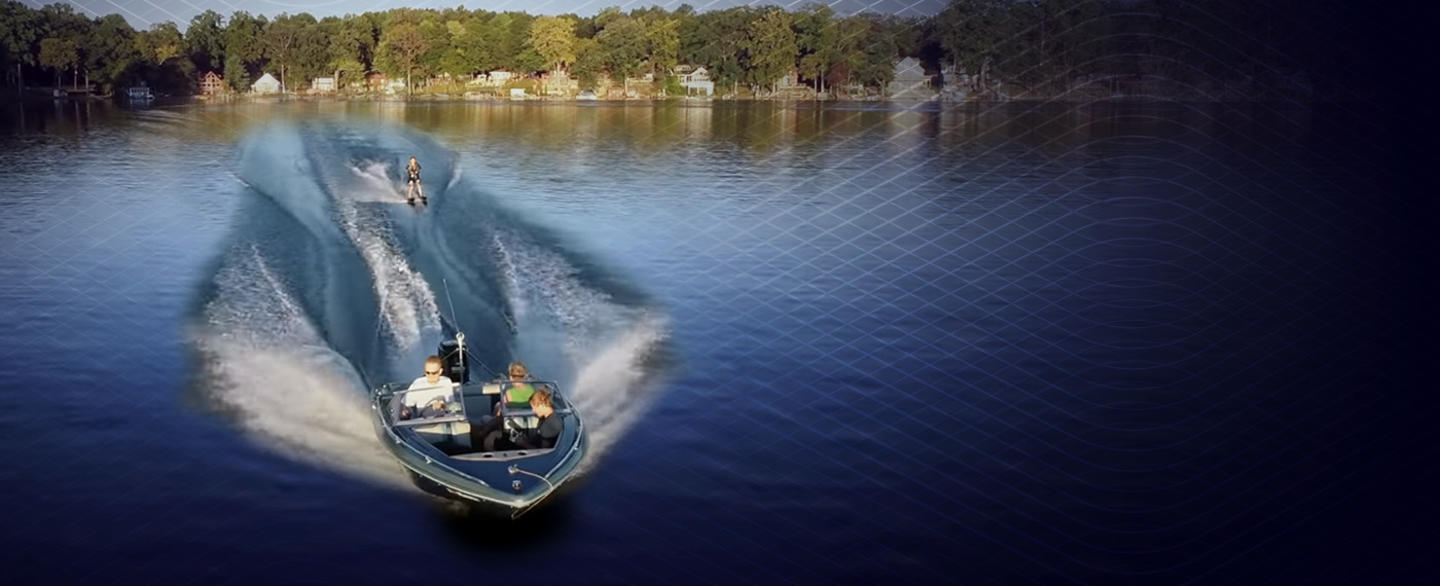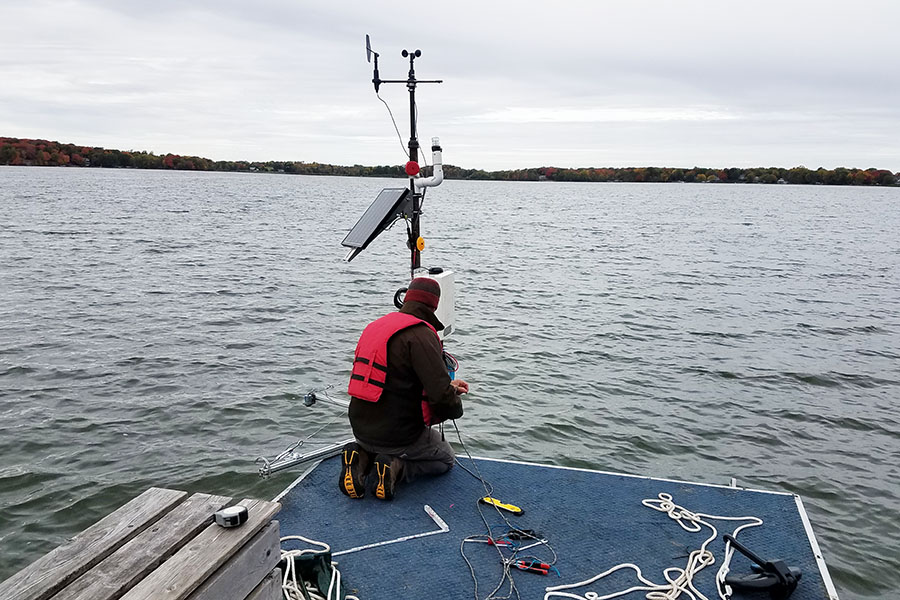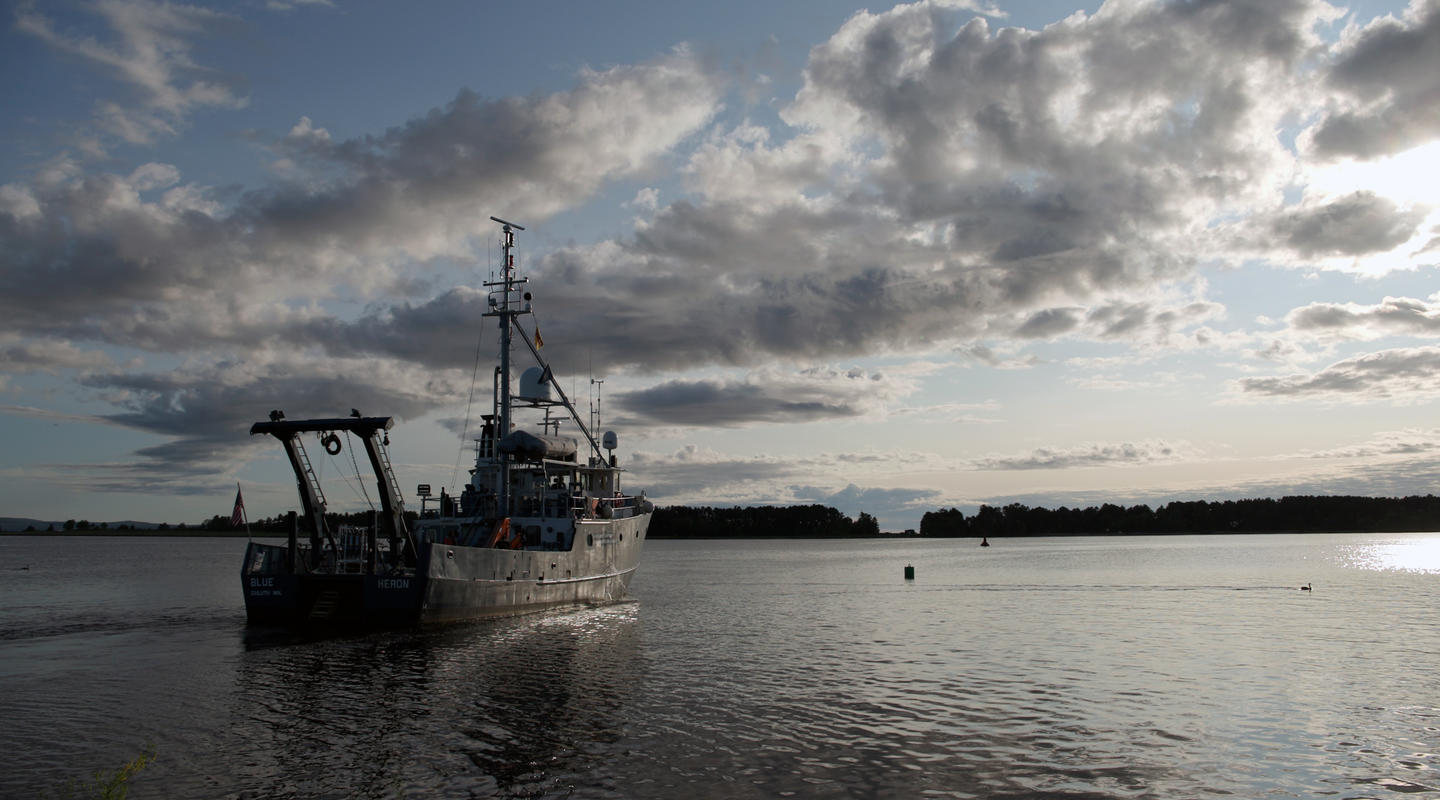
Healthy Waters Initiative, University of Minnesota
Jeff Marr has always loved Minnesota’s lakes. “Some of my best memories are of boating, waterskiing, and fishing with family and friends on lakes,” he says.
Marr is associate director of engineering and facilities at the St. Anthony Falls Lab, which is part of the U of M’s College of Science and Engineering. He was one of the lead researchers who studied the characteristics of waves from recreational boats, including wakesurfing boats.
Wakesurfing, which requires a boat capable of generating a large surfing wave, has become a popular pastime for some Minnesotans while sparking concerns in others about shoreline erosion, water quality, and safety. Scientific data on the size and impact of wakesurf boat waves has been lacking.
In an effort to provide data on boat-generated waves, the researchers carefully examined these waves by measuring their maximum height, total energy, and maximum power (defined as wake waves) produced by four recreational boats—two wakesurf boats and two more typical recreational boats. Using underwater data collection sensors, the researchers measured how the wake waves changed as they moved away from the boats and toward shore.
Researchers carried out the evaluation in fall 2020 under a range of speeds, weight, and other conditions on Lake Independence in Maple Plain, Minnesota.
The study found that wake waves produced by wakesurf boats are not only higher and contain more energy, but they also require greater distance to decrease to the same height/energy as wake waves generated by more typical recreational boats. This distance is needed to reduce the potential impact of wakesurf boats’ larger waves.
The researchers say this study gives legislators, lake associations, boat manufacturers, and property owners new information about the operation of wakesurf boats and other recreational boats on Minnesota’s lakes.
Supporters step up
They also see it as just the beginning. This foundational work has been critical as they design further studies, with future research aimed at propeller wash interactions with lake bottoms and an examination of the impact of large waves on aquatic vegetation and shorelines.
Funding for the research was provided by more than 200 individual contributions to the St. Anthony Falls Lab’s Healthy Waters Initiative.
A second crowdfunding campaign is now taking place. This will support the next phase of the study, which will focus on propeller wash—the turbulent jet produced by a boat’s motor and propeller that has the potential to stir up silt, sand, and organic detritus at the bottom of a lake.
“Crowdfunding is vitally important to the progression of our research,” says Andy Riesgraf, another lead researcher on the project. “When it comes to applying for research funds through traditional avenues—state and federal grants, the competition is stiff and the funds are limited. This, in addition to the speed in which funds can be raised, is why we launched this second crowdfunding campaign.”
Says Marr: “This research isn't about trying to limit enjoyment of lakes for boaters, but it seeks to provide the data needed to ensure our lakes can be enjoyed by all for generations to come.”




